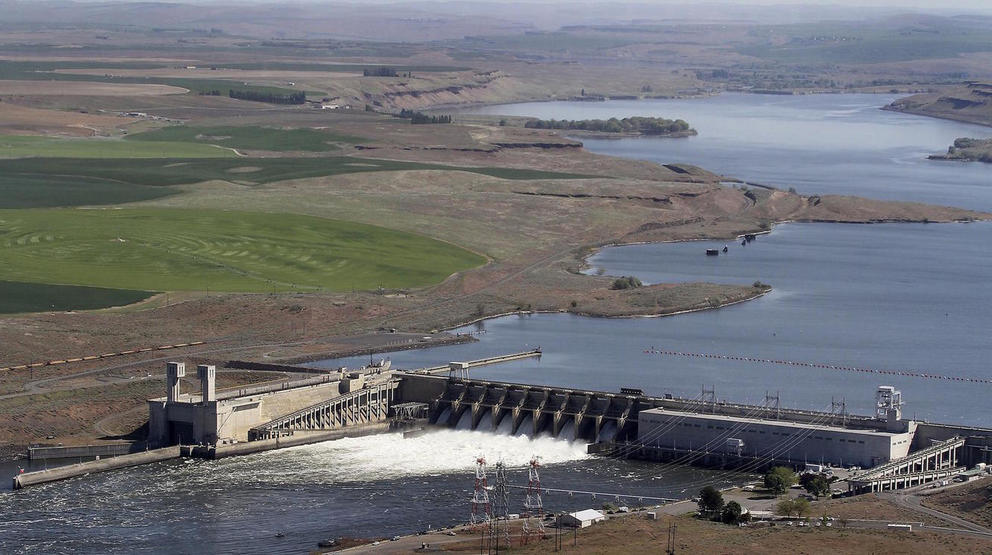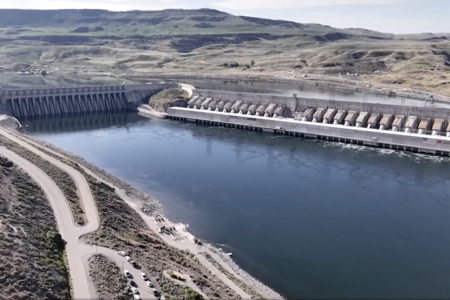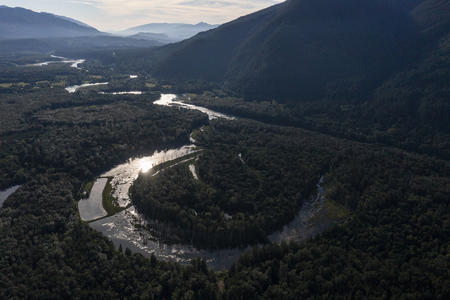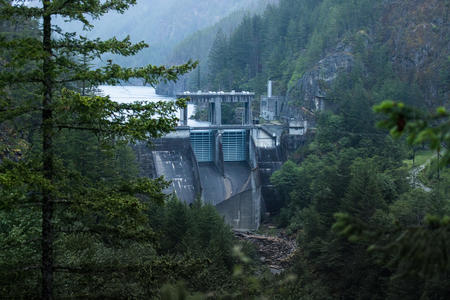On March 23, Washington’s two Republican representatives, U.S. Reps. Cathy McMorris Rodgers and Dan Newhouse, introduced a bill to save the dams. Their Democratic colleagues from Washington were leading the charge in the other direction before the 2022 election. Sens. Jim Risch, R-Idaho, and Steve Daines, R-Montana, have introduced the same dam protection bill in the Senate.
“The dams are critical infrastructure to the Pacific Northwest,” said McMorris Rodgers, who chairs the House Commerce Committee that has jurisdiction over the dams.
Republicans said the legislation was especially important given a mid-March announcement by President Joe Biden at the Conservation in Action 2023 Summit, in support of restoring the iconic salmon runs. Dam advocates saw that as an endorsement of dam breaching.
“I’m very concerned that President Biden is picking a side on this question,” McMorris Rodgers said in a telephone interview. “I see it as a political issue.”
Newhouse said the four lower Snake River dams are essential to flood control, barging, irrigation, agriculture and recreation.
“We cannot afford to lose them,” he said.
This is not purely a Democrats vs. Republicans issue, with some Republicans willing to consider dam removal, including Rep. Mike Simpson of Idaho who told The Spokesman Review in 2021 that we need to do everything possible to save salmon runs, starting with every other alternative but he didn't rule out dam removal.
“The reality,” he said in an interview with The Spokesman-Review, “is we’ve tried everything else.”
Democrats including Biden, Washington Gov. Jay Inslee and U.S. Sen. Patty Murray “have been misleading the American people with unscientific information in order to breach these dams,” Newhouse said.
Inslee spokesman Mike Faulk pushed back on Newhouse’s claim that Democrats were misleading the public.
“With all due respect, the congressman is wrong,” Faulk said. “We’re confident in the research we’re relying on to decide policy on this issue.”
A spokesman for Murray said the senator believes any breaching of the dams must wait until their benefits can be replaced. But Murray also believes that under no circumstances can salmon be allowed to go extinct, spokesman Amir Avin said.
“Rather than take unfounded and cheap political shots across the aisle, she’s ready to work with anyone to save our salmon,” Avin said.
Supporters of the dams say the giant structures can coexist with salmon.
“Breaching dams is the last thing we should be doing," Daines said. "We should be supporting and expanding hydropower throughout the United States.”
This is a major issue in Eastern Washington, where big signs saying “Save Our Dams” can be seen on the sides of barns.
The new bills would essentially codify the Trump administration’s 2020 Supplemental Biological Opinion, which acknowledged that breaching the dams would be beneficial to salmon but concluded lesser actions, like spilling water at the dams, improving habitat and other reforms, would be sufficient to prevent extinction.
Opposing the dams are many Native American tribes, who say saving the salmon is essential to their culture.
Among tribes working to save the salmon is the Nez Perce, whose reservation is located in the Idaho Panhandle near Lewiston.
“Salmon -- the icon of the Pacific Northwest -- are facing an extinction crisis, and need a restored lower Snake River,” tribal chairman Samuel Penney said in a news release last year. “The subsidized services provided by the four dams that have turned the Snake into a lake can be replaced.”
The tribe has sued the federal government over its 2020 salmon plan.
Environmental groups contend salmon are economically valuable in their own right, and also are a key food for declining orca populations in the Pacific Ocean.
Joseph Bogaard of the Seattle-based Save Our Wild Salmon Coalition said the bills would solidify an "extinction-is-the-only-option” strategy for salmon.
“This legislation … would lock in a failed status quo that for decades has been divisive, harmful and illegal,” Bogaard said.
“The legislation is not a surprise,” said Bill Arthur, chair of the Sierra Club's Columbia/Snake River Salmon Campaign.
“Sadly they don't have any solutions, but are just defending a failed and failing status quo,” he said. “The salmon and steelhead runs are nowhere close to meeting recovery requirements of the Endangered Species Act, let alone achieving restoration that will meet treaty-rights responsibilities or support sport, commercial and tribal fishing.”
Courts have ruled six times that the federal plans are inadequate and illegal, he said.
If the four Snake River dams were ultimately removed, it would be the largest such project in U.S. history. In 2012 the Elwha Dam on Washington’s Olympic Peninsula was removed to restore habitat. At the time, the National Park Service said the elimination of the Elwha Dam was the largest such project in U.S. history.
A draft report last year by scientists at the National Oceanic and Atmospheric Administration found changes are needed to restore salmon, ranging from removal of one to four dams on the lower Snake River to the reintroduction of salmon to parts of the Columbia River entirely blocked by dams.
In its final report, NOAA said breaching the dams was “essential" to saving the salmon.
Billions of dollars have already been spent on salmon recovery, but fish numbers have not rebounded.
Construction of the Ice Harbor Dam on the Snake River began in 1955. The Lower Monumental followed in 1969, the Little Goose in 1970, and the Lower Granite in 1975.
The dams stretch from Pasco, Wash., to near Pullman, and stand between migrating salmon and 5,500 miles of spawning habitat in Idaho.
The dams have fish ladders, but too many salmon die as they swim through the dams and across slack water reservoirs on their migrations.
In 1991, Snake River salmon and steelhead were listed as endangered species, requiring production of a federal recovery plan.
The U.S. government has spent more than $17 billion trying to recover Snake River salmon, through improvements to fish ladders and other measures, with little to show for it.
The debate, which has been percolating in the Northwest for three decades in court and in political arenas, is largely split along party lines, with Democrats generally supportive of dam breaching and Republicans opposed.
Breaching the dams “is absolutely a bad idea,” McMorris Rodgers said. “They are too important.”
Dam breaching is vehemently opposed by grain shippers, irrigators, power producers and other river users. They blame declining salmon runs on other factors, such as changing ocean conditions.
“Congressman Newhouse’s introduction of this legislation helps to ensure that these dams will continue to be an asset for decades to come,” said David Reeploeg, vice president of the Tri-City Development Council, a Central Washington economic development group.
“Washington farmers rely on the river system to transport more than half of the state’s wheat and access to overseas export markets. Barging is the most environmentally sound and economically viable mode of transportation,” said Casey Chumrau, head of the Washington Grain Commission.
U.S. Rep. Mike Simpson, an Idaho Republican, somewhat surprisingly started the latest round of debates in 2021, when he released a plan saying it would cost $34 billion to remove the dams and replace their benefits.
Last year, Murray and Inslee released their own study, which concluded that replacing the benefits provided by the four dams would cost $10.3 billion to $27.2 billion. They said the dams must not be breached until their benefits are replaced.
Breaching the dams — a process that involves punching holes in them to restore a free-flowing river — would significantly improve the ability of salmon to swim from their inland spawning grounds to the Pacific Ocean, where they spend most of their lives, and then back to their original spawning grounds to procreate and die, Murray and Inslee said.
“These dams contribute significantly to the decline of salmon and we are obliged to consider alternatives from the status quo to bring them back,” Faulk, the Inslee spokesman, said in response to the new bills in Congress.
Major benefits of the dams include making the Snake River navigable up to Lewiston, Idaho. It’s the most inland port on the West Coast, and the dams allow barges to carry wheat and other crops to Portland and other ocean ports for export. Eliminating the dams would require truck and rail transportation improvements to move crops.
Because the dams are federally owned, breaching them would require an act of Congress.
In the late 1800s, up to 16 million salmon and steelhead returned to the Columbia River Basin every year to spawn. Over the next century and a half, overfishing whittled that number down. By the early 1950s, just under 130,000 Chinook were returning to the Snake River.
McMorris Rodgers said dam opponents are ignoring scientific data showing some salmon runs on the Snake River are on the rebound.
Dam opponents also ignore factors — such as changing ocean conditions caused by climate change, pollution in Puget Sound and an increase in predators — that are reducing salmon runs, she said.
“Their focus is on breaching dams,” she said. “We have invested so much in making dams transparent to fish. We’ve made tremendous gains.”






